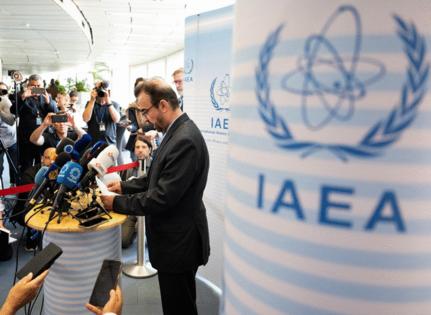Satellite images suggest US avoided Iran's nuclear reactors
Published in News & Features
For all of the destruction the U.S. Air Force visited on Iran’s nuclear program, satellite images show that military planners were careful not to hit reactors at a key research facility.
Notably absent from the International Atomic Energy Agency’s latest damage report are three research reactors operating at the Isfahan Nuclear Technology and Research Center. One of the so-called miniature neutron source reactors, made by China in 1991, runs on 900 grams (2 pounds) of bomb-grade uranium.
American officials said at the weekend that an assessment of the final damage from President Donald Trump’s decision to join Israel in attacking Iran will take some time. But as more images emerge, the Isfahan sites appear to have been intentionally left untouched, according to four senior officials in Vienna. They asked not to be identified in exchange for discussing sensitive information.
The IAEA’s board of governors convened an emergency session on Monday in the Austrian capital to discuss the ongoing strikes against Iran’s nuclear program. Hitting an operational nuclear reactor, even if low powered like the ones at Isfahan, could set a grave precedent, the officials said.
Agency inspectors demanded the Islamic Republic inform them about the current location of its highly enriched uranium stockpile. Iran, meanwhile, warned the attacks have gravely damaged international diplomatic efforts to halt the spread of atomic weapons.
U.S. attacks have “delivered a fundamental and irreparable blow to the international non-proliferation regime conclusively demonstrating that the existing Non-Proliferation Treaty framework has been rendered ineffective,” Iran’s IAEA envoy, Reza Najafi, told journalists.
The NPT was the grand bargain struck a half century ago. It gave signatories like Iran access to nuclear technologies on the condition they did not seek to make weapons. Because much of the tech is dual use — with applications in civilian or military lines of work — the treaty tasks the IAEA with ensuring nuclear material isn’t diverted.
Iranian engineers used the research reactors at Isfahan to study atomic reactions by irradiating different materials. That so-called neutron activation analysis played a crucial role in early U.S. efforts to build nuclear weapons, but it’s subsequently also become a valuable technique for industry and nuclear medicine.
One of the suspected locations of the mini-reactor neighbors a destroyed building next to a tiled square planted with trees. The damaged structure likely was landscaped for senior scientists and other personnel to congregate after using the reactor, one analyst said.
As well as attacking the Isfahan site, located 450 kilometers (280 miles) south of Tehran, the U.S. used B-2 stealth jets laden with Massive Ordnance Penetrators, known as GBU-57 bombs, to attempt to destroy Iran’s underground uranium-enrichment sites in Natanz and Fordow.
Satellite images taken on Sunday of Fordow and distributed by Maxar Technologies showed craters, possible collapsed tunnel entrances and holes on top of a mountain ridge. The environmental hazards unleashed by the U.S. and Israeli attacks so-far have remained localized, according to the IAEA.
“The three sites targeted by the United States — also including Isfahan and Natanz — contained nuclear material in the form of uranium enriched to different levels, which may cause radioactive and chemical contamination within the facilities that were hit,” IAEA Director General Rafael Mariano Grossi said on Sunday.
It’s only after enriched uranium is irradiated, either in a bomb or nuclear reactor, that more dangerous fallout is liable to spread. The IAEA wrote last week that a direct hit on Iran’s only operating power reactor in Bushehr would carry the “most serious” consequences because it would result in “a very high release of radioactivity.”
While striking Isfahan’s operating units wouldn’t result in the same level of catastrophe, it would mark another significant escalation in the conflict.
----------
—With assistance from Rachel Lavin, Hayley Warren, Yasufumi Saito and Spe Chen.
©2025 Bloomberg L.P. Visit bloomberg.com. Distributed by Tribune Content Agency, LLC.







Comments